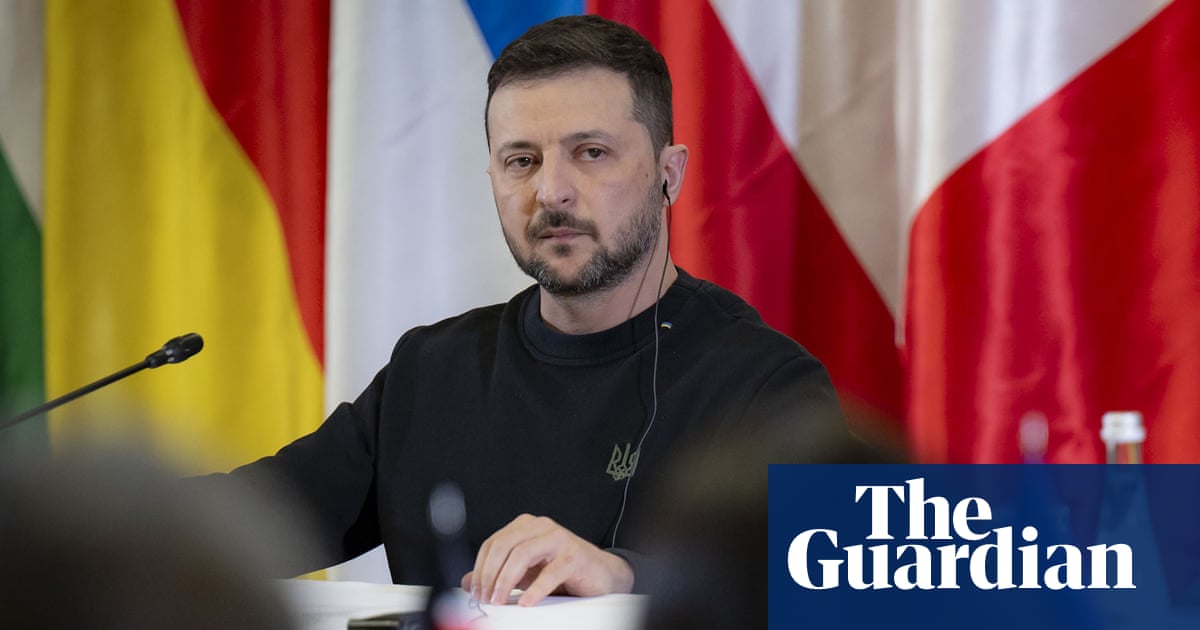Ukraine’s president said the country had been targeted by nearly 500 drones in the past week as well as more than 20 missiles and complained that Russia was using the country as “a testing ground” for its munitions.
Though Russia’s first ever use of the Oreshnik intermediate range ballistic missile on Dnipro on Thursday captured global attention, on Sunday Volodymyr Zelenskyy highlighted the increased level of Shahed drone attacks.
Fifty drones were shot down on Saturday night, out of 73, the Ukrainian president said. Over the previous week a total of 460 of the Iranian-designed drones were launched by Russia into Ukraine’s airspace, he added.
“Ukraine is not a testing ground for weapons. Ukraine is a sovereign and independent state. But Russia still continues its efforts to kill our people, spread fear and panic, and weaken us,” Zelenskyy said in a statement on Sunday morning.
Ukraine says Russia has set up two factories to make the distinctive delta-winged Shahed 136 drones, called Geran-2 by Moscow, in Tatarstan, about 800 – miles from the border in Ukraine. Production amounts to “hundreds per week” said a government source in Kyiv.
The drones are often fired into Ukraine as soon as they are ready, and while they remain easier to shoot down or neutralise compared to high-speed missiles, they tie up the country’s air defence and can cause serious damage with a 50kg warhead when they reach their targets.
In October, 2,023 Shahed drones were launched into Ukraine, a record according to Kyiv’s military. Last week’s figures suggest the rate of attacks continues to be similar with attacks on Kyiv and major cities a near nightly feature, tiring out civilian populations woken up by air raid alerts.
Russia is continually modifying the drones to try to make them more deadly. Earlier this month, Ukraine’s military posted a video of a thermobaric warhead, which creates a fire cloud of about 2,000C when detonated, and is considered particularly lethal if it explodes inside buildings.
Efforts are also under way, Ukrainian military sources said, to implement artificial intelligence to try to create “drone swarms” whereby Shaheds communicate and coordinate attacks in such a way as to overwhelm air defences. However, it is unclear how effective this technology may be.
Zelenskyy said “Ukraine needs more air defence systems” to help counter the aerial threats. “We are working with our partners to do so. It is crucial to strengthen the defence of our skies,” he added.
Because Shahed 136 drones are relatively inexpensive, costing a few tens of thousands of dollars a time, it is not practical to use Patriot missiles to shoot them down as they cost about $4m (£3.2m) each. Instead, specialist Ukrainian forces often use truck mounted machine guns to knock them out with small arms fire.
Ukrainian specialists are also trying to develop cheap first person view (FPV) drones, costing less than $1,000, that are capable of knocking out Shaheds, although the task is made difficult because the turbulent airflow caused by Shahed in flight significantly affects the piloting of a smaller FPV drone.
The most serious attack this month took place a week ago, when 120 missiles and 90 drones were unleashed against Ukraine’s energy grid. Nationwide electricity rationing was introduced the next day, as Ukrainian officials tried to repair a grid that Greenpeace warned was at risk of catastrophic failure if the attacks continued.
Hostilities escalated last week when first the US, followed by the UK and France, agreed to allow Atacms and Storm Shadow missiles to be used against targets inside Russia for the first time. That prompted Russia to respond by launching the Oreshnik missile at Ukraine, a nuclear-capable weapon, able to strike anywhere in Europe.
The Oreshnik is not thought to have caused much damage, but its intention was demonstrative. The Russian president, Vladimir Putin, said on Friday that his country would use the missile again in “combat conditions” – while a day before he had said Moscow “had the right” to use it against countries who have supplied Ukraine with weapons.
France’s foreign minister, Jean-Noël Barrot, told the BBC on Sunday that Ukraine could fire French long-range missiles into Russia “in the logics of self-defence” and indicated that France was open to extending an invitation to Ukraine to join Nato. That, however, has been resisted by the outgoing president Joe Biden and is not thought likely to be supported by the incoming Donald Trump.

